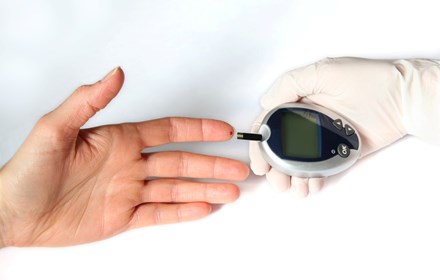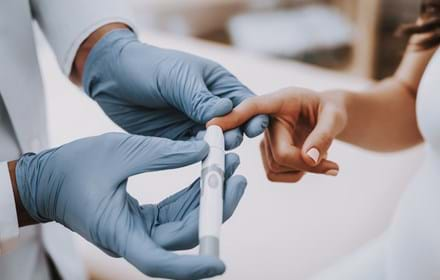
Blood test could help predict risk of developing type 2 diabetes
Researchers in Sweden have created a blood test that could help predict whether a person may be at risk of developing type 2 diabetes.
The team from Lund University behind the study hope that people at risk of developing type 2 diabetes could be motivated into making changes to their lifestyle, such as eating healthily and getting more exercise, all of which could help reduce the risk, or at least delay the onset, of the condition.
It is already possible to predict whether a person may be likely to develop type 2 diabetes by measuring HbA1c, average blood glucose (sugar) levels average.

Changes in DNA could help predict development of type 2 diabetes
The researchers at Lund University wanted to take this existing knowledge and create more detailed methods of this kind of blood test, so that any preventative lifestyle changes could be made earlier, long before the condition is diagnosed.
The researchers did this by measuring the presence of chemical changes that control gene activity in DNA in four specific genes, to find out whether they are active or not.
Karl Bacos, Researcher in Epigenetics at Lund University, said: “This could motivate a person at risk [of developing type 2 diabetes] to change their lifestyle. The hope is that this will be developed into a better way to predict the condition.”
The researchers looked at insulin-producing beta cells from deceased people and found that the chemical changes in the four genes in question increased, depending on the donor’s age. This in turn affected the activity of the genes.
When these changes were copied in cultured beta cells, they proved to have a positive effect on insulin discharge, allowing the researchers to see the changes happening in the blood.
The blood samples from the participants of two separate research projects – one Danish and one Finnish – were then studied and compared with blood samples taken from the same participants 10 years later. The Finnish participants, who had shown higher levels of chemical changes in their DNA in their first sample, had a lower risk of type 2 diabetes 10 years later.
In the Danish participants, higher DNA methylation in their first sample was associated with higher insulin discharge 10 years later. All of the Danish participants were healthy on both occasions, whereas around one-third of the Finnish participants had developed type 2 diabetes.
As the studies were based on a relatively small number of participants and selection of genes, the researchers now hope to continue with more detailed tests to look for the stronger predictive potential of analysing a person’s entire genetic make-up in a larger population group.
The research group has previously shown that age, diet and exercise affect the risk of developing type 2 diabetes through changes to genes.
Charlotte Ling, Professor and Research Project Manager, said: “Increased insulin secretion actually protects against type 2 diabetes. It could be the body’s way of protecting itself when other tissue becomes resistant to insulin, which often happens as we get older.
“You cannot change your genes and the risks that they entail, but epigenetics means that you can affect the DNA methylations (chemical changes), and thereby gene activity, through lifestyle choices.”
The results of the study were recently published in the journal Nature Communications
I would like to make a regular donation of
I would like to make a single donation of
There are lots of ways to raise money to support
people living with all forms of diabetes.
Bake, Swim, Cycle, Fly ... Do It For DRWF!
Fundraise with us
Recent News


